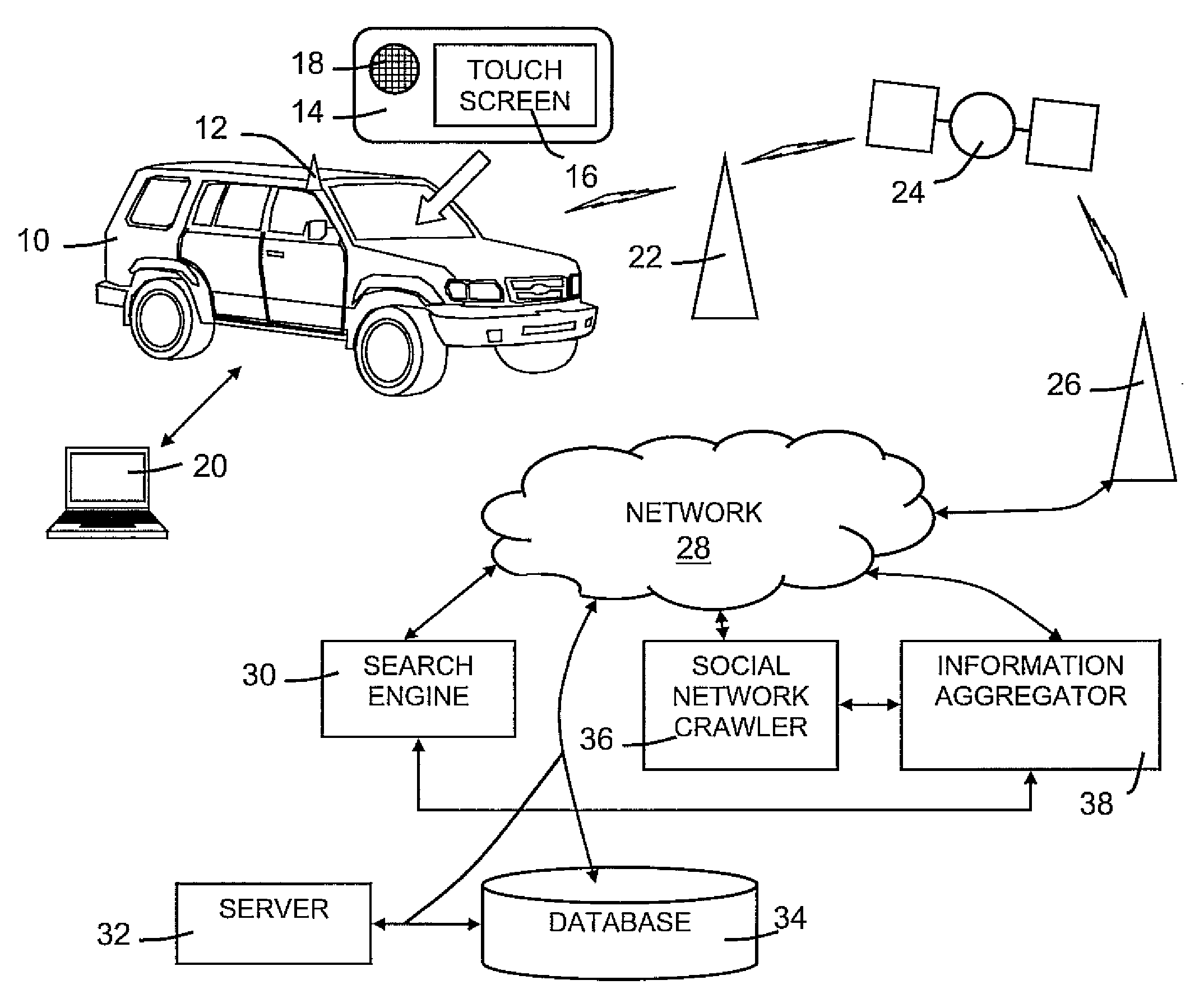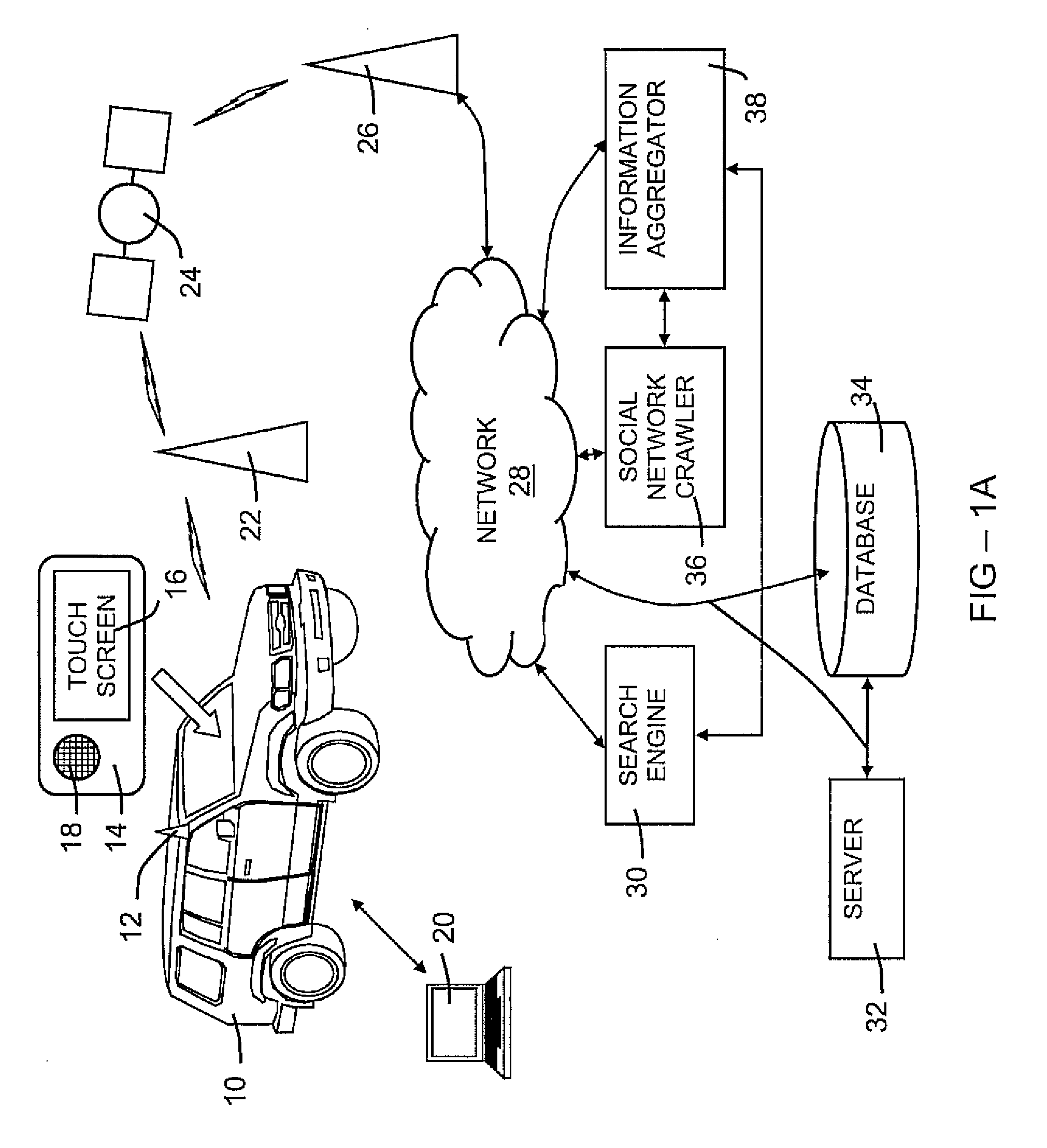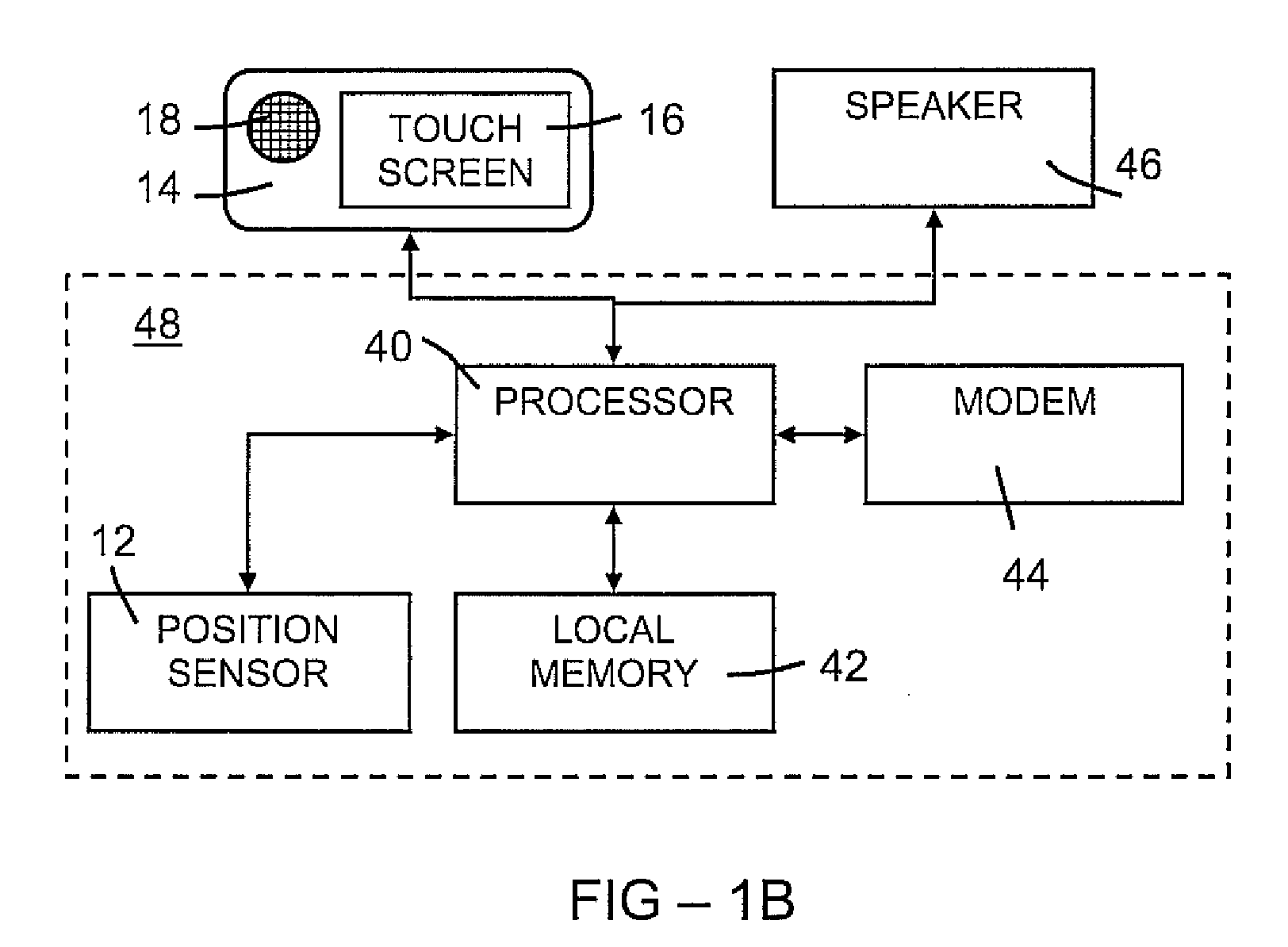Mobile recommendation and reservation system
a technology applied in the field of mobile recommendation and reservation system, can solve the problems of not being able to provide the required attention to search and evaluate resources, not being able to know the person's preferences, and not being able to select a particular resource from those availabl
- Summary
- Abstract
- Description
- Claims
- Application Information
AI Technical Summary
Benefits of technology
Problems solved by technology
Method used
Image
Examples
example 1
[0077]A person, driving in a vehicle with a passenger, requests a tennis court that will be available for at least 1 hour, located within a 20 minute drive of the present location. The system determines the driver's position from using current position data (for example, from a GPS device or cellphone), determines a search area within 20 minutes drive of the current position (possibly accounting for traffic conditions and weighted based on present heading), searches for tennis courts within the search area, ranks available courts against the person's preferences, and presents a recommendation to the driver. The driver accepts or declines the recommendation, either explicitly through a response or implicitly through another action or request, with other recommendations being made if the recommendation is declined.
[0078]The preference data relating to tennis courts may be determined from previous acceptance or rejections of recommendations, memberships of sports clubs, recommendations...
example 2
[0079]A person, returning from a previous engagement wants to arrange to play tennis with a colleague for 45 minutes to 1.5 hours, and to be finished with the tennis within 3.5 hours of the time of the request. These demands place specific restrictions (constraints) on the time resource to be allocated, and by propagating these constraints back through the planning process, upon the locations and times at which the tennis can be played.
[0080]An example approach is as follows. The search area is determined using the current locations and travel conditions of the person and the colleague. Candidate tennis courts are identified in the search area and polled electronically to determine which ones have time available within the range of the request. The preferences of the person and / or the colleague are scraped from their postings to one or more social networks. Alternatively, a consensus (or other summary) preference can be determined from the social networks to order amongst potentiall...
example 3
[0083]A person, driving a vehicle, requests a restaurant with exceptional lasagna between the present location and home that can provide the lasagna for carry-out by the time a vehicle leaving 10 minutes from now would reach their location. The time data is used to estimate location, and hence a search area, for the resource. A conventional search engine, such as Google™, is used to locate resources within the search area. Usual driving times can be used to determine search area, optionally modified by real-time traffic flow data.
[0084]Search terms may be grouped by category, and search terms in the same category as the request term used to locate resources and / or preference data. For example, the request for lasagna enables other Italian food terms to be used in a search, such as “pizza”. A resource supplying pizza and lasagna, with pizza highly recommended within social group data, can be more or less preferred than a resource supplying lasagna that contains no recommendations for...
PUM
 Login to View More
Login to View More Abstract
Description
Claims
Application Information
 Login to View More
Login to View More - R&D
- Intellectual Property
- Life Sciences
- Materials
- Tech Scout
- Unparalleled Data Quality
- Higher Quality Content
- 60% Fewer Hallucinations
Browse by: Latest US Patents, China's latest patents, Technical Efficacy Thesaurus, Application Domain, Technology Topic, Popular Technical Reports.
© 2025 PatSnap. All rights reserved.Legal|Privacy policy|Modern Slavery Act Transparency Statement|Sitemap|About US| Contact US: help@patsnap.com



